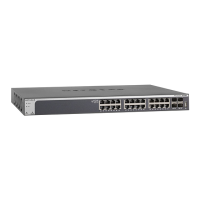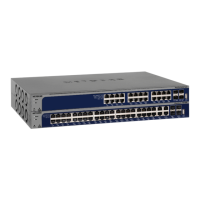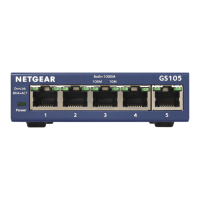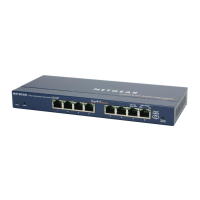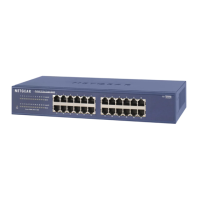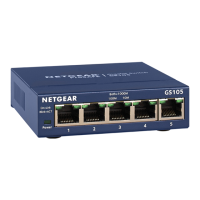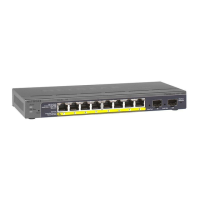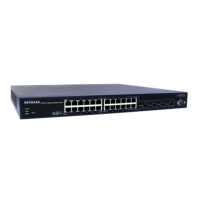Switching
48
XS728T ProSAFE 28-Port 10-Gigabit L2+ Smart Switch
• Short. Specifies a short time-out value.
5. Click Apply to send the updated configuration to the switch.
Configuration changes take effect immediately.
VLAN
Adding virtual LAN (VLAN) support to a Layer 2 switch offers some of the benefits of both
bridging and routing. Like a bridge, a VLAN switch forwards traffic based on the Layer 2
header, which is fast. Like a router, it partitions the network into logical segments, which
provides better administration, security, and management of multicast traffic.
By default, all ports on the switch are in the same broadcast domain. VLANs electronically
separate ports on the same switch into separate broadcast domains so that broadcast
packets are not sent to all the ports on a single switch. When you use a VLAN, users are
grouped by logical function instead of physical location.
Each VLAN in a network has an associated VLAN ID, which displays in the IEEE 802.1Q tag
in the Layer 2 header of packets transmitted on a VLAN. An end station might omit the tag, or
the VLAN portion of the tag, in which case the first switch port to receive the packet can either
reject it or insert a tag using its default VLAN ID. A given port can handle traffic for more than
one VLAN, but it can support only one default VLAN ID.
From the VLAN menu, you can access the features described in the following sections:
• VLAN Configuration
• VLAN Membership
• VLAN Status
• Port PVID Configuration
• MAC Based VLAN Group Configuration
• MAC Based VLAN Group Membership
• Protocol Based VLAN Group Configuration
• Protocol Based VLAN Group Membership
• GARP Switch Configuration
• GARP Port Configuration
VLAN Configuration
Use the VLAN Configuration screen to define VLAN groups stored in the VLAN membership
table. The switch supports up to 512 VLANs. VLAN 1 is created by default, and by default all
ports are untagged members.
Ports in the default VLAN can be tagged.
To configure VLANs:
1. Select Switching> VLAN > Basic > VLAN Configuration.
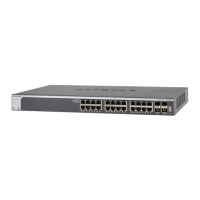
